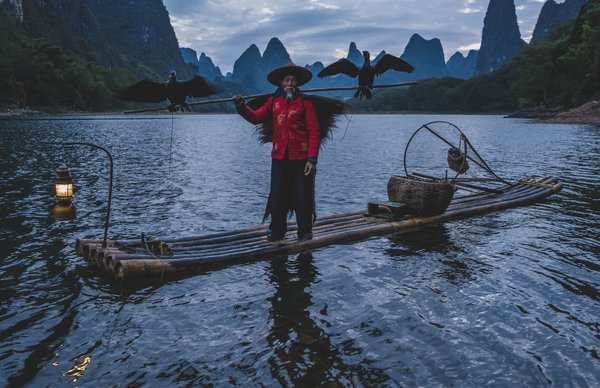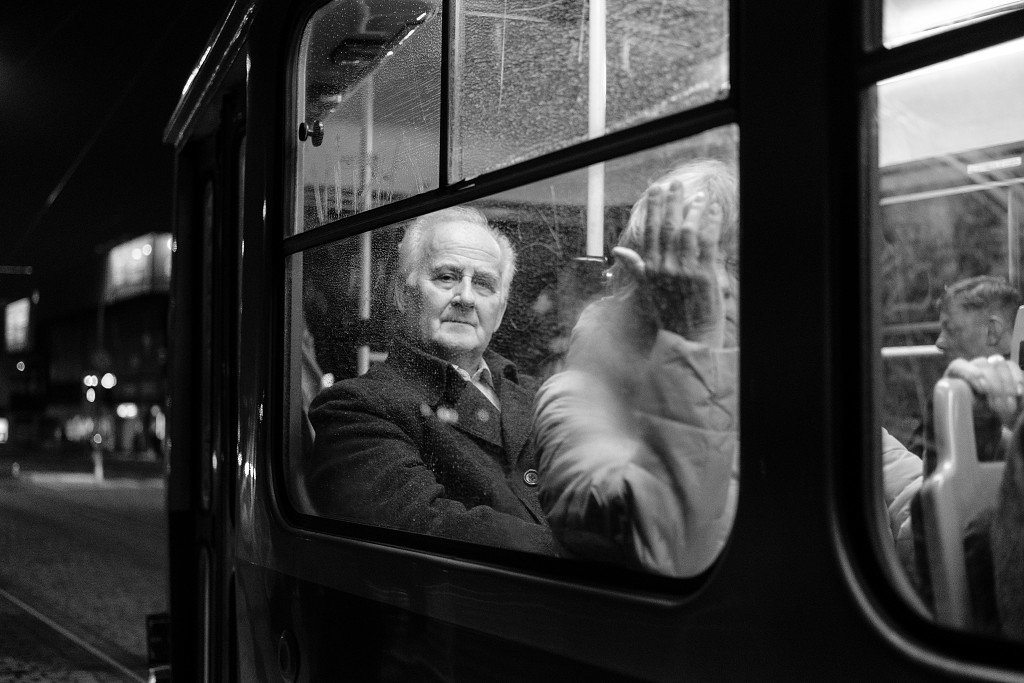Leaderboard
Popular Content
Showing content with the highest reputation on 02/14/2020 in all areas
-
How much difference does "in camera image stabilization" make?
cup4sharks reacted to BruceClement for a topic
IBIS and lens OIS are absolutely wonderful to have but as Boessu mentioned, proper technique will take care of the need for IBIS. Holding the camera correctly and when there is a heavy lens, holding the lens with one hand while shooting, arms in close to the body will stabilize any camera. Then for shooting, keep your shutter speed fast enough to cover any shake you are introducing. The 1/focal length rule is a solid starting point to compensate for any shake that you introduce. IBIS and OIS allow you to more easily shoot at speeds slower than that BUT isn't absolutely needed to do so. Cameras for decades have not had any stabilization in them and millions upon millions of pictures have been taken that are tack sharp without it. Only two of my lens have OIS on them and I have never had IBIS in any body and I shoot weddings in low light all the time without any problems. I also shoot wildlife with long lens' and also have no problem. If I can do it, anyone can do it.1 point -
Having Fuji, Olympus and Sony, I would advise you to try an Olympus body: its IBIS technology is fantastic and would allow you to put that "extra-shake" behind your concerns. Or, if you really want to go Fuji, I guess you would be very happy with a 2nd-hand X-H1 (I had one and replaced it with an X-T3): it is heavier and the IBIS is also great. But I'd check the Olympus before anything...1 point
-
1 point
-
1 point
-
How much difference does "in camera image stabilization" make?
Leonardo75 reacted to itchy shutter finger for a topic
cup4sharks - Have you worked any on shooting technique to minimize the hand shake? I learned a very long time ago that deep breath-exhale-hold-SHOOT is a technique that worked well for me at photography, shooting firearms, shooting bow and arrow, bowling, and even hammering nails. I just turned 66, and I can you with certainty I am not as steady as I once was, but I can still shoot 1/30 without OIS using this technique. My wife has the same issue as you - she has never been able to shoot a clear photo, and this is working for her now. I don't have a Fuji body with IBIS, but I have three lenses with OIS, and the extra latitude for still shots is significant. I don't shoot video, so I can't comment on that.1 point -
How much difference does "in camera image stabilization" make?
cup4sharks reacted to boessu for a topic
Hello cup4sharks I think your problem with IBIS will be mainly that it is quite expensive and I'm not sure you can compensate that with cheaper lenses (more on that below). If the X-T4 will include IBIS, it will be a more expensive camera than the XT-3 is. And of course a much more expensive camera than the X-T30 you look at. So if you "wait" for the X-T4, it's possible you'll wait for the "wrong" price range. I'm also pretty sure the X-T40, X-T50... won't have "physical" IBIS because of that for a long time. But first you have to understand that camera IBIS is not the same like in-lens IS. IBIS does minimize the "flat" shaking on x, y axis and rolling. In-lens IS does minimize pitch and yaw. That's the reason why a XH-1 can combine both systems together. However, In-lens IS helps more for photos with long range lenses, while IBIS is generally helpful in movie situations. Facing that, I can imagine that in-lens image stabilization will help you more than IBIS. But I can't presume to be the judge of that, as I don't have that sort of problem. So the first advice I give you is: try to find out if you really need IBIS or if you have to buy IS lenses anyway. I can imagine you don't need both systems together, but as I said: how can I know that?! Beside of that I'm pretty sure you need a more hefty camera. A X-T3 is a bigger camera which is less difficult to hold in the hands. If you buy a cheaper X-T30, I would recommend you to include a nice hand grip in your calculation. If you have the time to wait, I would also set a watcher to the price of the X-H1. Rumors say it's not that of a success for Fuji and it is possible that they'll drop the price in a very foreseen future (it already dropped remarkable). If there really will be a X-T4 with IBIS released, I'm pretty sure X-H1 gets a rather hefty price drop if not even a sell-out. Saying that, the X-H1 wold get a true bargain in that situation. Cheers1 point -
I’ve seen a few early adopters mention this already - apparently it happens if you’re using the clarity function and is just a side effect of the extra processing going on. It doesn’t happen in continuous as the clarity function is automatically disabled in that setting.1 point
-

Streetphotography (open thread)
PAE reacted to ireturn1day for a topic
1 point -
Streetphotography (open thread)
MarcelMartinez reacted to rolf55 for a topic
aus vier mach viele by Rolf Marx, auf Flickr1 point -
1 point
-
56mm+two extension tubes...Rapport 1:1?
yukosteel reacted to Denali3times for a topic
OK Guys...the results are absolutely amazing! After trying few macro lens options, I set my preference for a Micro-Nikkor 55mm 2,8 + tube. @Milandro, the curvature of the negative wasn't in the equation as my negative is maintained in place by an enlarger negative carrier. I can now confirm that my negatives reproduction are absolutely perfect. I compared them with some scans I get from a professional lab using a Nikon 5000ED scanner and mines are, way out, better with more tonalities and approximately the same pixel count when using the XPro2. Here are the useful information if someone goes the same way: Only real macro lenses give good to outstanding results Micro-Nikkor 55/2,8 is an extraordinary lens I didn't test Fuji Macro because of high price and no need of autofocus but I believe it must be excellent The negative must be flat so the use of an enlarger negative carrier is mandatory (or similar negative holder) The use of a remote trigger is mandatory (I use a cheap remote with cable from Amazon) My light source is an old X-Ray light (white balance isn't a problem with B&W negatives) The «scan» time is calculated in seconds, not in minutes. Only depend of the time it takes me to change negative in the carrier! WooHoo! Cost = zero/scan if I consider that I already have the XPro2 and a friend borrowed me his old 55mm with have a stiff focus ring so was never used. I made myself the reproduction rig with stuff I already had. Seriously I was hoping the results will be good but they are stunning. When taking time to test and refine all the variables, it works great. Now the only things I still must do is «scanning» 20 years of B&W photography...1 point -
It was tested by the guy behind Fuji vs Fuji blog, on a set of lenses, with examples: https://www.fujivsfuji.com/mcex-11-vs-mcex-16/ But I doubt the 56mm can be a very good macro lens. That's really not its purpose, and macro extension rings are sadly limited by the laws of physics. My advice would be to use a dedicated macro lens. For scanning slides, perhaps a 1:2 would be enough? In that case, buy the 60mm from Fuji. It's small, sharp, awesome and is now easy to be found used, thanks to the newer 80mm. Otherwise, if you need 1:1, there are different options: - Native lenses: Fuji 80/2.8 (but far too expansive if you just want to scan slides), Samyang 100/2.8 (cheaper), Zeiss Touit 50/2.8, Meike 85mm (I think it's new too) - Adapted lenses from other brands. You can mount barely anything from Nikon, Canon, Tamron, Sigma... The old (and the new) 90mm lenses from Tamron are great 1:1 macro lenses (the oldest models are only 1:2 though), and can be found used in lots of different mounts. - The Raynox adapters. You don't get the quality of a dedicated macro lens, but you get close and it's not too expansive. Good luck! Konzy1 point




21_59_31.thumb.png.722b5e1af64611fabcd64d059bcbe8e1.png)


